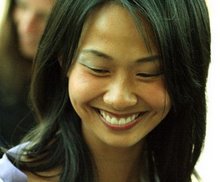 Europeans first reached Southern Africa in the 15th century. However, no Europeans decided to settle here until the 17th century. These were the Afrikaners – the White Tribe of Africa.
Europeans first reached Southern Africa in the 15th century. However, no Europeans decided to settle here until the 17th century. These were the Afrikaners – the White Tribe of Africa.The Afrikaners started out as a small group of employees of the Dutch East India Company who were released from their contracts to establish farms. Mainly Dutch and German, they were later joined by French Calvinists fleeing religious persecution. They also brought Indian and Malay slaves, who gradually mixed into the population to form today’s coloured people. Their numbers increased and they moved north and eastward into the heart of Africa. They took up a semi-nomadic farming lifestyle and became known as Trekboers (“wandering farmers”), later shortened to Boers. Extremely isolated and intensely religious, these were the first white people to develop a connection and loyalty to Africa, referring to themselves as “Afrikaners”. Over the next couple of centuries, the Afrikaners battled with the Khoekhoen, British, Zulu and other tribes. In 1948, the radical Afrikaner-led National Party was voted into government and began its methodical program of apartheid.
I think the history of South Africa must often make it difficult for Afrikaners to be proud of who they are. But as the years add distance between apartheid and the South Africa of today, some Afrikaners have told me that they are once again starting to feel proud of their culture.
To get a taste of Afrikaner culture, two weekends ago I headed off to a tiny locale called Groot Maricot. About two hours west of Johannesburg, Groot Maricot is the proud home of the rather obscure Herman Charles Bosman Festival. We would never have heard of the Bosman Festival if it weren’t for an Afrikaner friend named Ronelle (who you may remember from the farewell party in Bathurst), who called it “the best Afrikaner cultural experience that you can have in English.”
Kim and I flew to Joburg on Friday night, where we were picked up and transported to Balfour to sleep at Ronelle’s parents’ farm. On Saturday morning, we had a proper Afrikaner breakfast of pap topped with chopped onions and tomatoes, cheese, chillies, pineapple, and curry paste. Then we packed up the car with camping gear and hit the road to the Maricot.
 Bosman is widely regarded as South Africa’s greatest short story writer. He wrote about Afrikaner characters and society in English. He fell in love with the Maricot and the region’s bushveld (savannah with bushes and small thorny trees). The festival was, well, intimate. In an audience of less than 50 participants, we were treated to readings and plays, food and drink (including mampoer, a horrid apricot brandy). The stories certainly reflect a different time, a hardy people, the Marico landscape, and the racial attitudes that reveal so much about the fabric of South African society. Here, for example, is the opening passage from “Starlight on the Veld”, the first story in Bosman’s famous collection Mafeking Road and other stories:
Bosman is widely regarded as South Africa’s greatest short story writer. He wrote about Afrikaner characters and society in English. He fell in love with the Maricot and the region’s bushveld (savannah with bushes and small thorny trees). The festival was, well, intimate. In an audience of less than 50 participants, we were treated to readings and plays, food and drink (including mampoer, a horrid apricot brandy). The stories certainly reflect a different time, a hardy people, the Marico landscape, and the racial attitudes that reveal so much about the fabric of South African society. Here, for example, is the opening passage from “Starlight on the Veld”, the first story in Bosman’s famous collection Mafeking Road and other stories:It was a cold night (Oom Schalk Lourens said), the stars shone with that frosty sort of light that you see on the wet grass some mornings, when you forget that it is winter, and you get up early, by mistake. The wind was like a girl sobbing out her story of betrayal to the stars.The real gem of the weekend was the thunderstorm on Saturday night that prompted me to seek out the festival organizer to ask for shelter. He seemed right out of a Bosman story as he stood there with his long grey hair and beard, clasped my hands and proclaimed, “Of course you cannot go camp in this rain, you must sleep in the Bosman school!” We had the immense privilege of sleeping in the one-roomed Bosman schoolhouse amidst bushveld paintings on warm cow dung floors. True Afrikaner hospitality.
Jan Ockerse and I had been to Derdepoort by donkey-cart. We came back in the evening. And Jan Ockerse told me of a road round the foot of a koppie that would be a short cut back to Drogevlei. Thus it was that we were sitting on the veld, close to the fire, waiting for the morning. We would then be able to ask a kaffir to tell us a short cut back to the foot of that koppie.




No comments:
Post a Comment